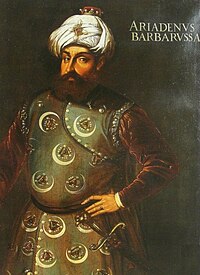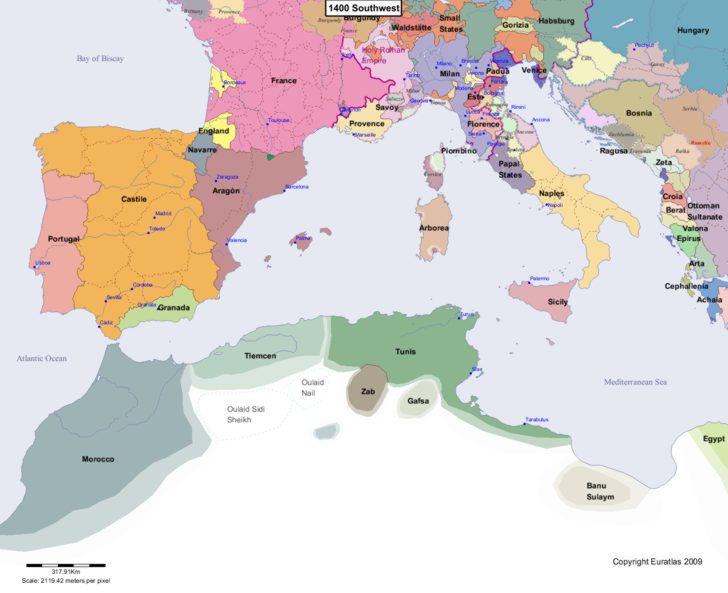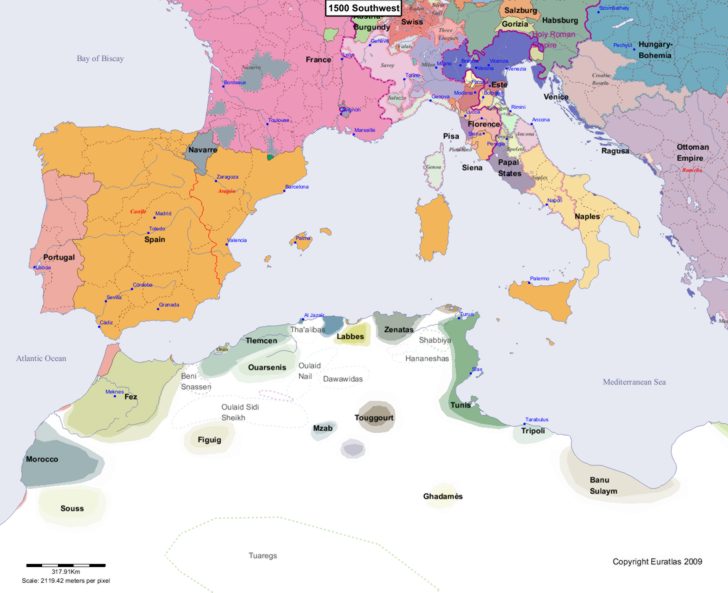https://en.wikipedia.org/wiki/Hayreddin_Barbarossa
https://www.britannica.com/biography/Barbarossa
https://en.wikipedia.org/wiki/Barbary_pirates
https://www.britannica.com/topic/Barbary-pirate
Barbarossa is one of the most famous pirates/admirals in all history which was alive and doing gods works around 1500s to 1545s.
He beat holy league in Battle of Preveza, he kept raiding mediterrenean coasts, stealing ships from European powers. He established the Ottoman supremacy in the Mediterranean. The guy practically made Ottomans 3rd largest naval force.
Barbarossa AKA Redbeard
Greek/Turkish Pirate
circa 1530's
"He and his brother Aruj, sons of a Turk from Lesbos, took up piracy on the Barbary Coast in hopes of seizing an African domain for themselves. When Aruj was killed in 1518, Khidr took the title Khayr al-Din. He offered allegiance to the Ottoman sultan and in return received military aid that enabled him to capture Algiers in 1529. Appointed admiral in chief of the Ottoman Empire (1533), he conquered all of Tunisia. Emperor Charles V captured Tunis in 1535, but Khayr al-Din defeated his fleet at the Battle of Preveza (1538), securing the eastern Mediterranean for the Turks for 33 years. His red beard was the source of the epithet Barbarossa, used by Europeans."

I think that piracy/barbary naval actions might be lot more active in EU4 to make naval gameplay more serious and detailed by the way.
Also English later Muslim pirate called Jack Ward was also famous, possibly inspired Jack Sparrow character even.
John/Jack Ward AKA Yusuf Reis
Barbary Corsair
Active 1553 - 1622
"
In 1602 John Ward was jailed for plundering a Danish ship in the Caribbean. Then in 1603, Ward was forced into the Royal Navy, which by some was considered to be a fate worse than death. Shortly afterward, he and 30 others deserted at Plymouth and stole a small bark. Despite the size of the ship, they were able to capture a two larger ships, one with six guns, and set sail for the Mediterranean. Two years later he stole a 32-gun warship and renamed it the Gift and used it to plunder several merchantmen loaded with spices and silks.
In 1605 in Morocco, several English and Dutch sailors joined his crew, including Richard Bishop and Anthony Johnson. By the end of 1606, Ward had worked a deal with Uthman Dey, the ruler of Tunis. He was permitted to use Tunis as a safe haven from where he could strike out in hunt for prey. In return, Uthman Dey would buy their booty for a fifth of its true value. From their base, they took several rich prizes, including a 60 ton ship loaded with a tremendously valuable cargo.
The winter of 1607 Ward's largest ship became unseaworthy so he secretly deserted with a few of his crew, sailing off in a French ship. The large ship sank off Greece drowning 250 muslim and 150 English sailors aboard. The Tunisians were outraged over the loss of men and Ward's desertion, but Uthman Dey, wealthy from his dealings with Ward, offered him protection. Ward however offered King James I a large bribe in exchange for a pardon. King James refused Ward's offer and Ward was forced to return to Tunis. Uthman Dey kept his word, however, and Ward was safe. Ward eventually became a muslim and changed his name to Yusuf Reis. As Yusuf Reis, he continued his career in piracy until 1622, up until the age of 70. By then he had both an Italian wife and also a wife in England.
He lived out the rest of his life in luxury and may have died of the plague."
https://en.wikipedia.org/wiki/Turkish_Abductions
Turkish supported piracy kept ongoing even into Atlantic sea, reaching Iceland.
Jan Janszoon
AKA Murad Reis
Active 1620
This Dutch privateer joined the Barbary corsairs and in 1627 led a Muslim fleet to Iceland, where they took slaves and plunder.
"Ireland was subject to a similar attack. In June 1631 Murat Reis, with corsairs from Algiers and armed troops of the Ottoman Empire, stormed ashore at the little harbor village of Baltimore, County Cork. They captured almost all the villagers and took them away to a life of slavery in North Africa"
https://www.britannica.com/biography/Barbarossa
https://en.wikipedia.org/wiki/Barbary_pirates
https://www.britannica.com/topic/Barbary-pirate
Barbarossa is one of the most famous pirates/admirals in all history which was alive and doing gods works around 1500s to 1545s.
He beat holy league in Battle of Preveza, he kept raiding mediterrenean coasts, stealing ships from European powers. He established the Ottoman supremacy in the Mediterranean. The guy practically made Ottomans 3rd largest naval force.
Barbarossa AKA Redbeard
Greek/Turkish Pirate
circa 1530's
"He and his brother Aruj, sons of a Turk from Lesbos, took up piracy on the Barbary Coast in hopes of seizing an African domain for themselves. When Aruj was killed in 1518, Khidr took the title Khayr al-Din. He offered allegiance to the Ottoman sultan and in return received military aid that enabled him to capture Algiers in 1529. Appointed admiral in chief of the Ottoman Empire (1533), he conquered all of Tunisia. Emperor Charles V captured Tunis in 1535, but Khayr al-Din defeated his fleet at the Battle of Preveza (1538), securing the eastern Mediterranean for the Turks for 33 years. His red beard was the source of the epithet Barbarossa, used by Europeans."

I think that piracy/barbary naval actions might be lot more active in EU4 to make naval gameplay more serious and detailed by the way.
Also English later Muslim pirate called Jack Ward was also famous, possibly inspired Jack Sparrow character even.
John/Jack Ward AKA Yusuf Reis
Barbary Corsair
Active 1553 - 1622
"
In 1602 John Ward was jailed for plundering a Danish ship in the Caribbean. Then in 1603, Ward was forced into the Royal Navy, which by some was considered to be a fate worse than death. Shortly afterward, he and 30 others deserted at Plymouth and stole a small bark. Despite the size of the ship, they were able to capture a two larger ships, one with six guns, and set sail for the Mediterranean. Two years later he stole a 32-gun warship and renamed it the Gift and used it to plunder several merchantmen loaded with spices and silks.
In 1605 in Morocco, several English and Dutch sailors joined his crew, including Richard Bishop and Anthony Johnson. By the end of 1606, Ward had worked a deal with Uthman Dey, the ruler of Tunis. He was permitted to use Tunis as a safe haven from where he could strike out in hunt for prey. In return, Uthman Dey would buy their booty for a fifth of its true value. From their base, they took several rich prizes, including a 60 ton ship loaded with a tremendously valuable cargo.
The winter of 1607 Ward's largest ship became unseaworthy so he secretly deserted with a few of his crew, sailing off in a French ship. The large ship sank off Greece drowning 250 muslim and 150 English sailors aboard. The Tunisians were outraged over the loss of men and Ward's desertion, but Uthman Dey, wealthy from his dealings with Ward, offered him protection. Ward however offered King James I a large bribe in exchange for a pardon. King James refused Ward's offer and Ward was forced to return to Tunis. Uthman Dey kept his word, however, and Ward was safe. Ward eventually became a muslim and changed his name to Yusuf Reis. As Yusuf Reis, he continued his career in piracy until 1622, up until the age of 70. By then he had both an Italian wife and also a wife in England.
He lived out the rest of his life in luxury and may have died of the plague."
https://en.wikipedia.org/wiki/Turkish_Abductions
Turkish supported piracy kept ongoing even into Atlantic sea, reaching Iceland.
Jan Janszoon
AKA Murad Reis
Active 1620
This Dutch privateer joined the Barbary corsairs and in 1627 led a Muslim fleet to Iceland, where they took slaves and plunder.
"Ireland was subject to a similar attack. In June 1631 Murat Reis, with corsairs from Algiers and armed troops of the Ottoman Empire, stormed ashore at the little harbor village of Baltimore, County Cork. They captured almost all the villagers and took them away to a life of slavery in North Africa"
Last edited:
- 2
- 1









